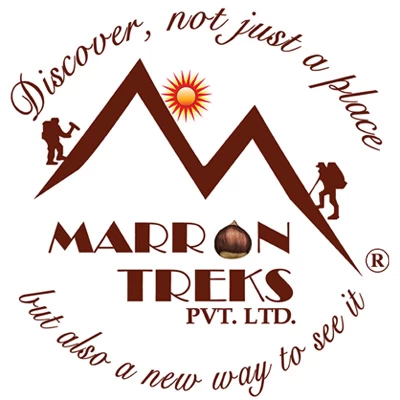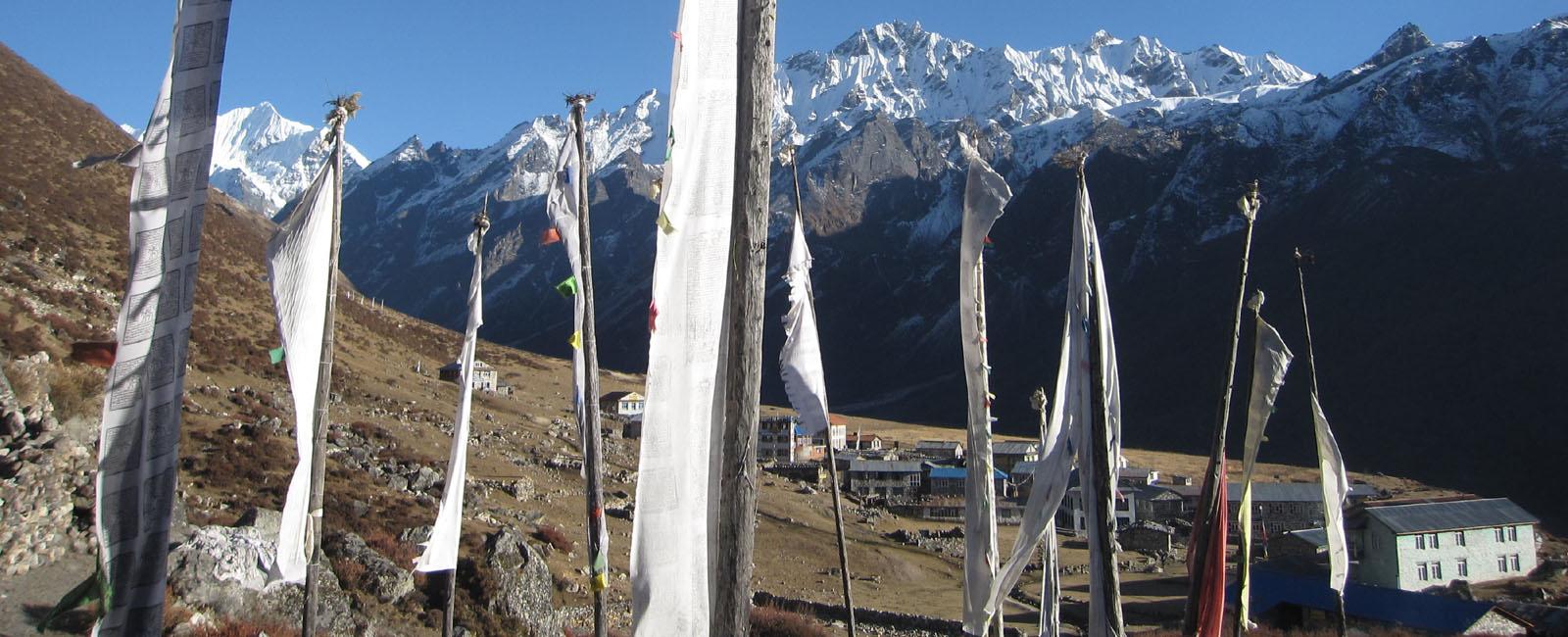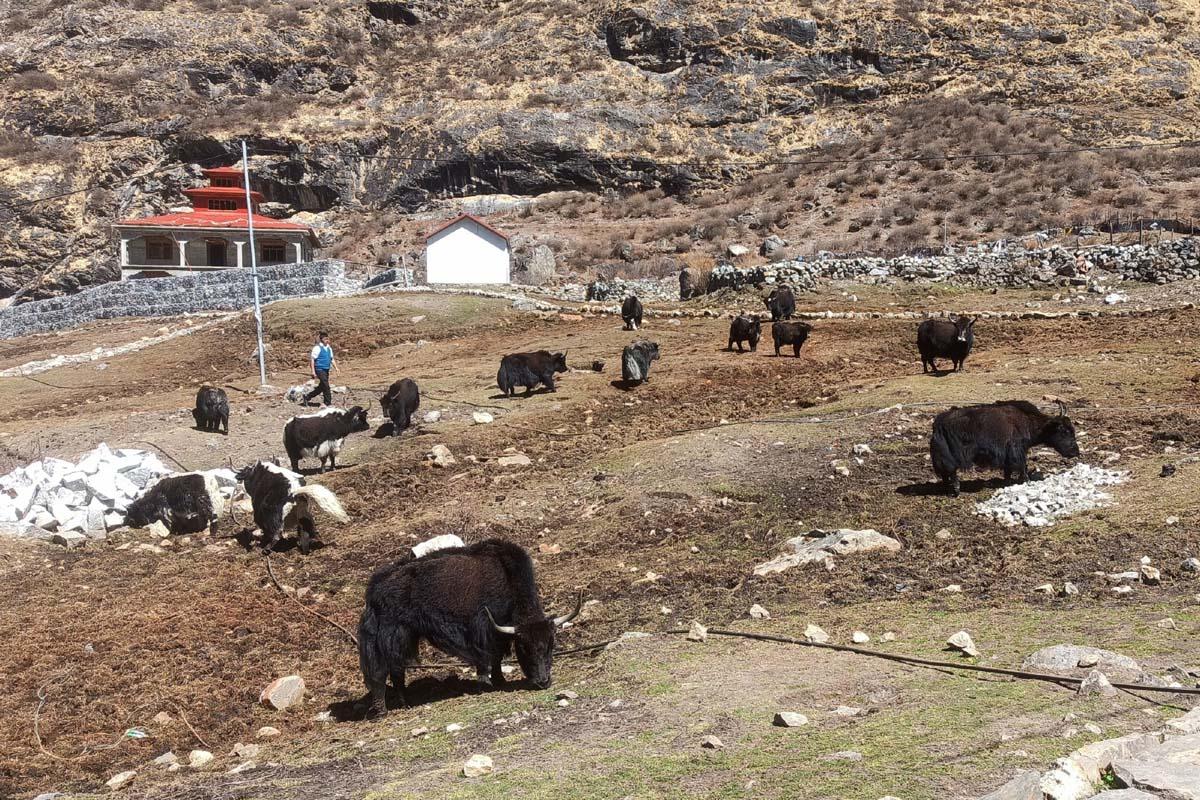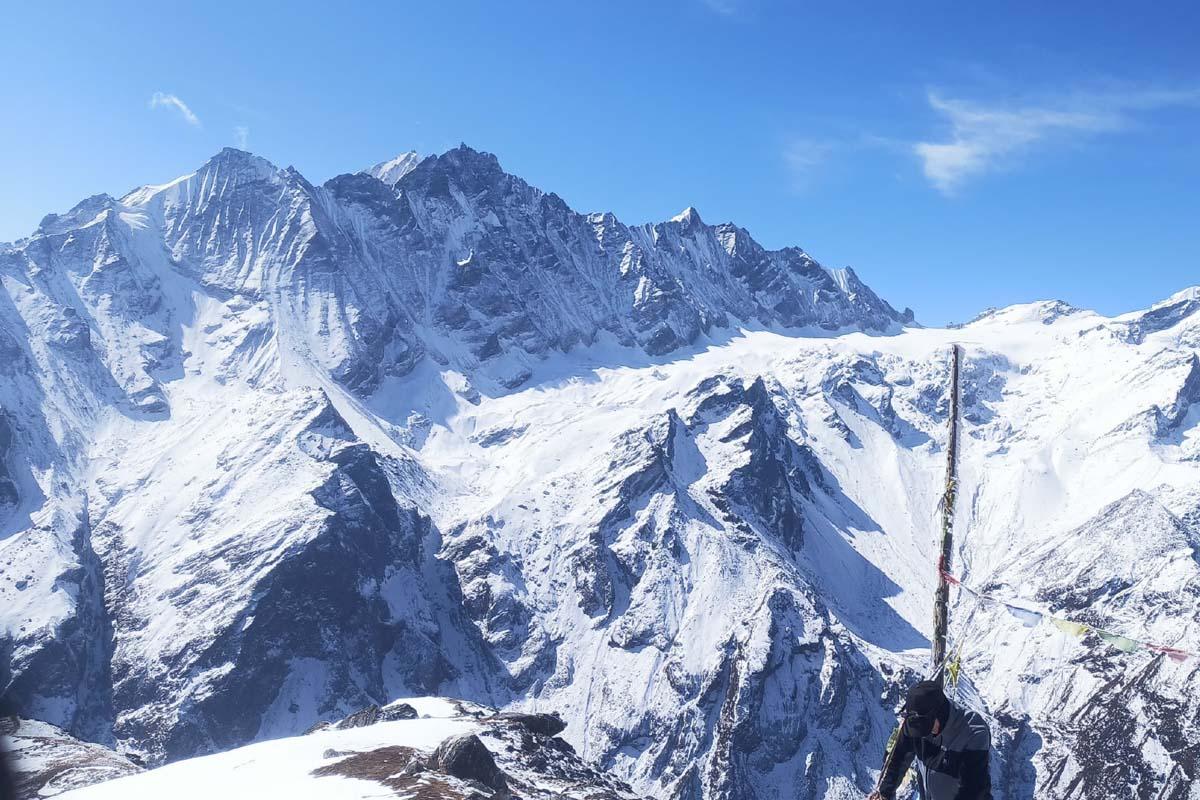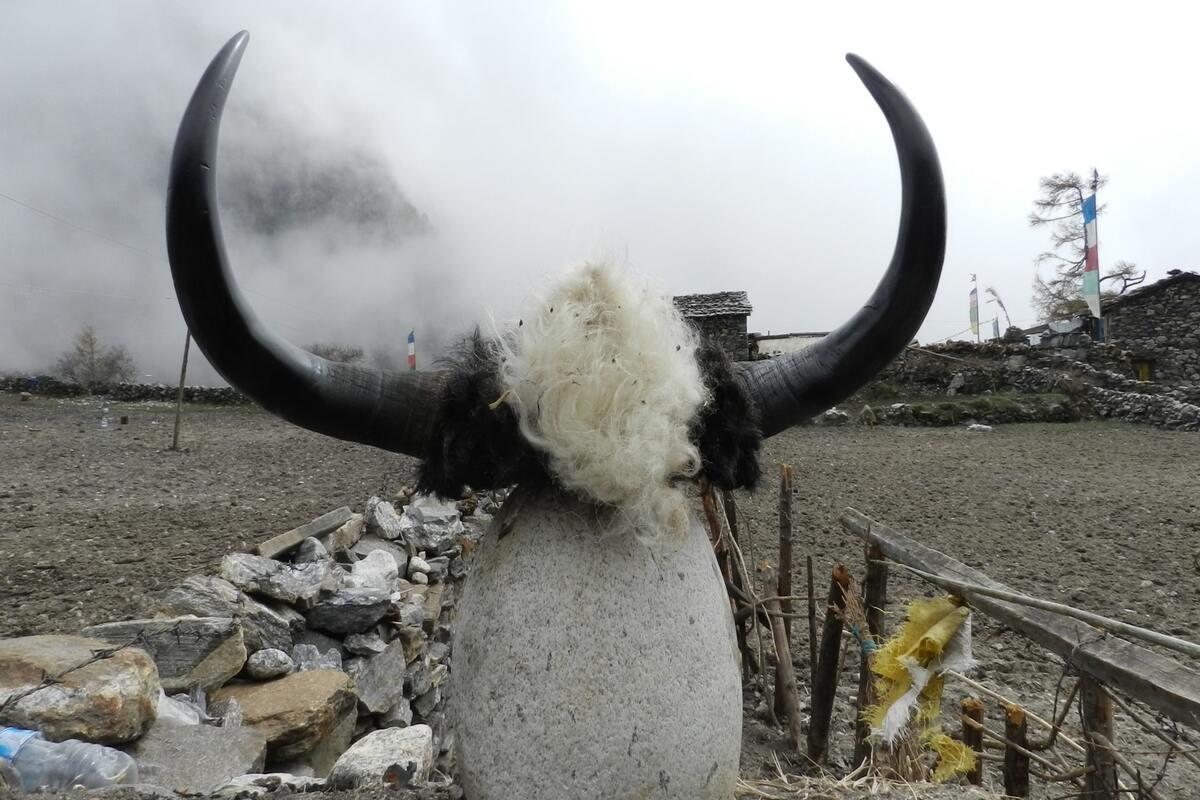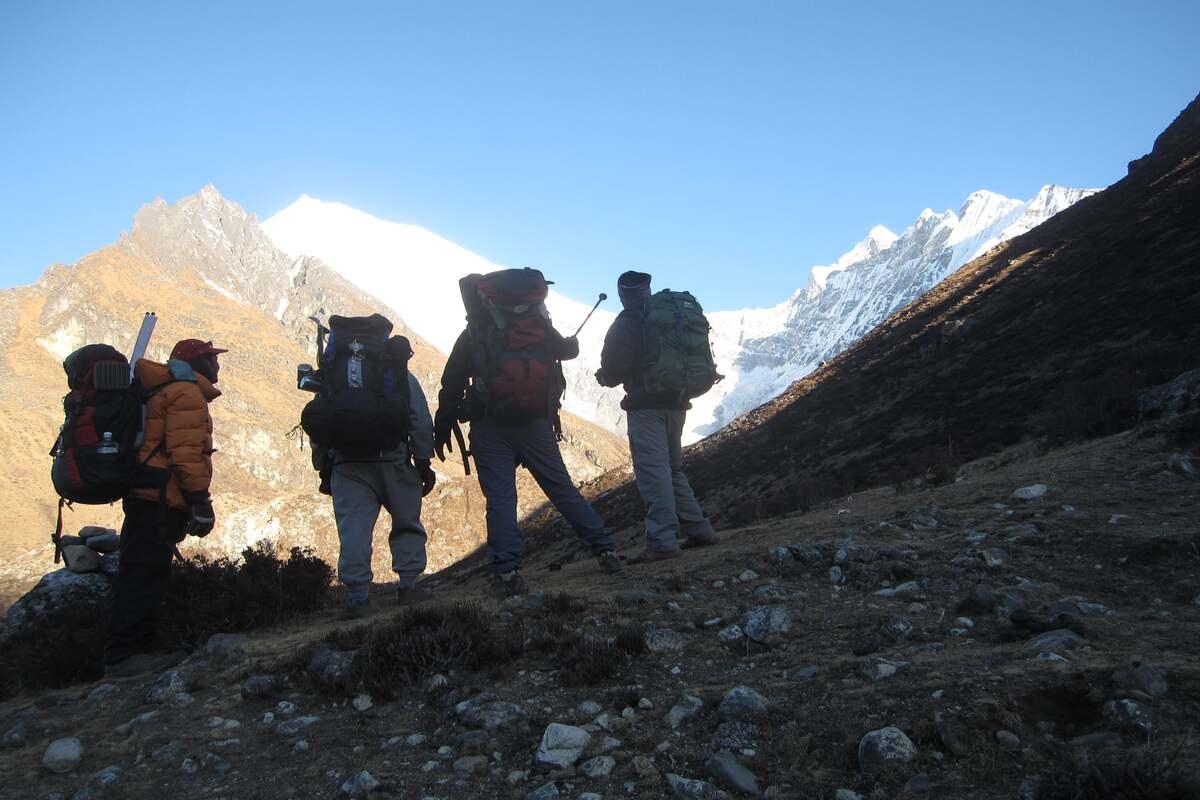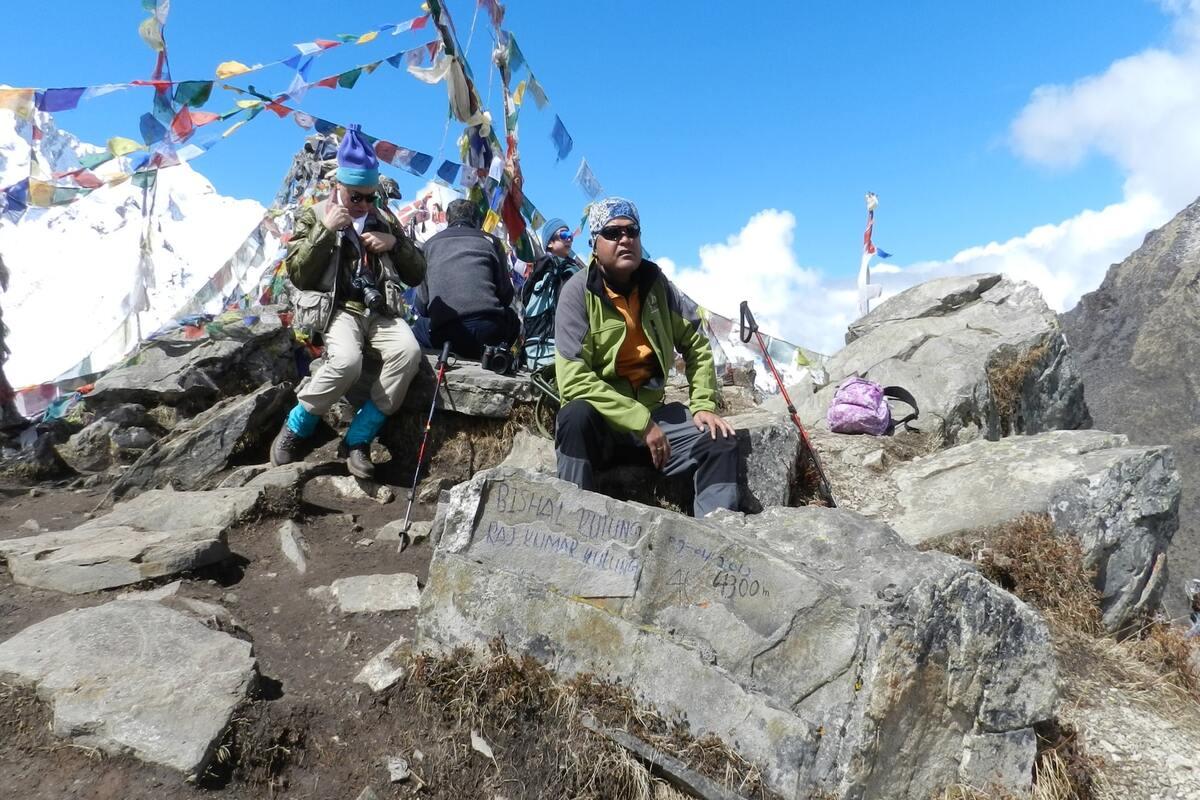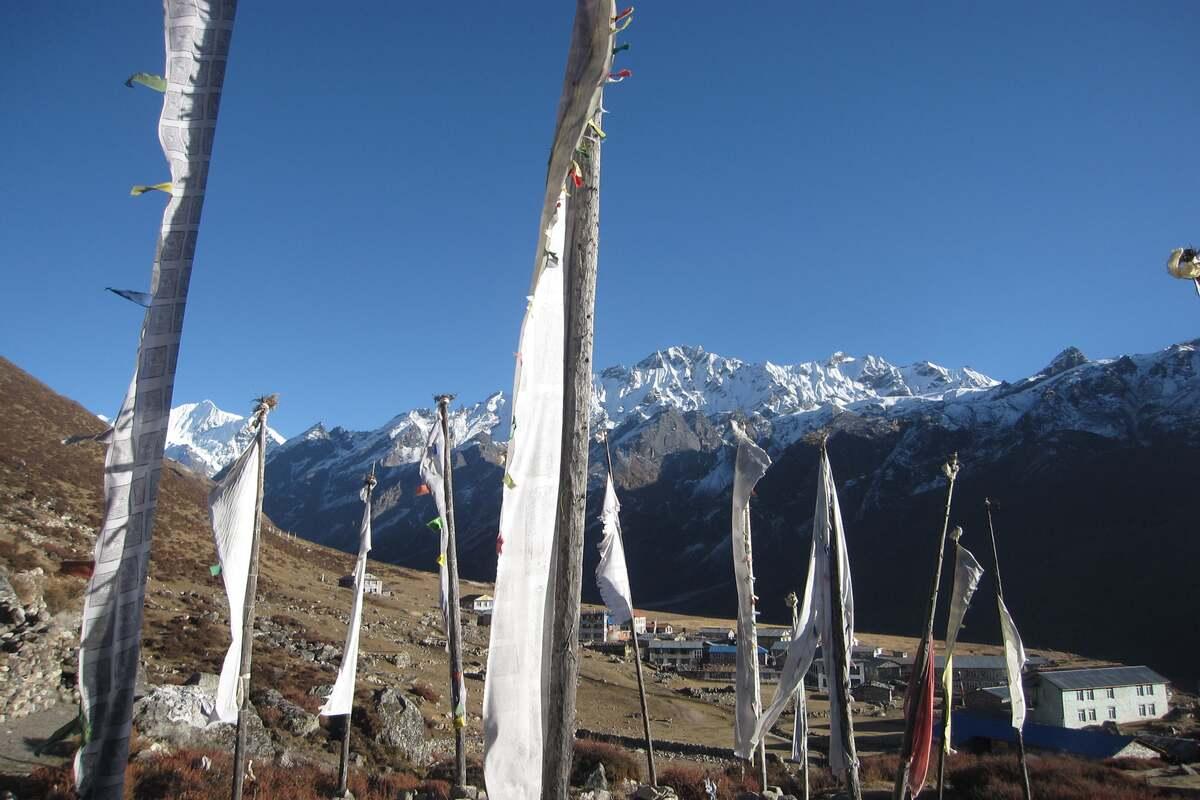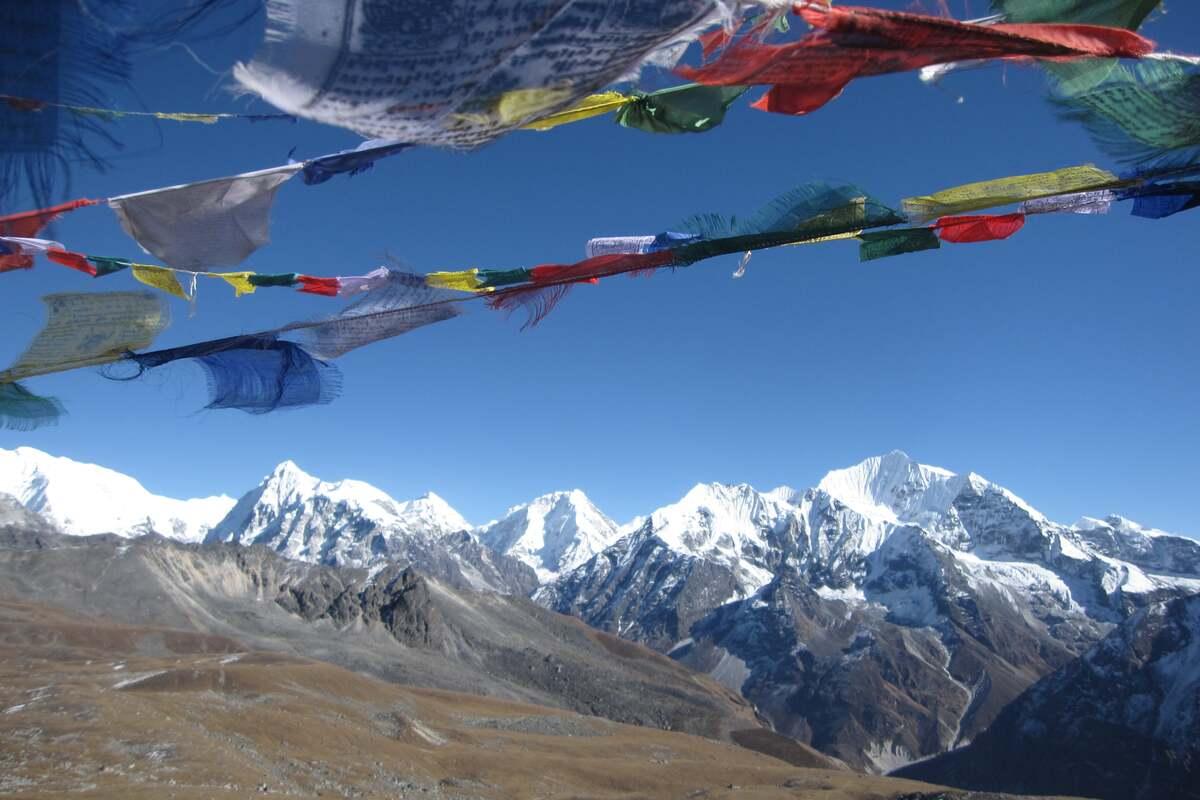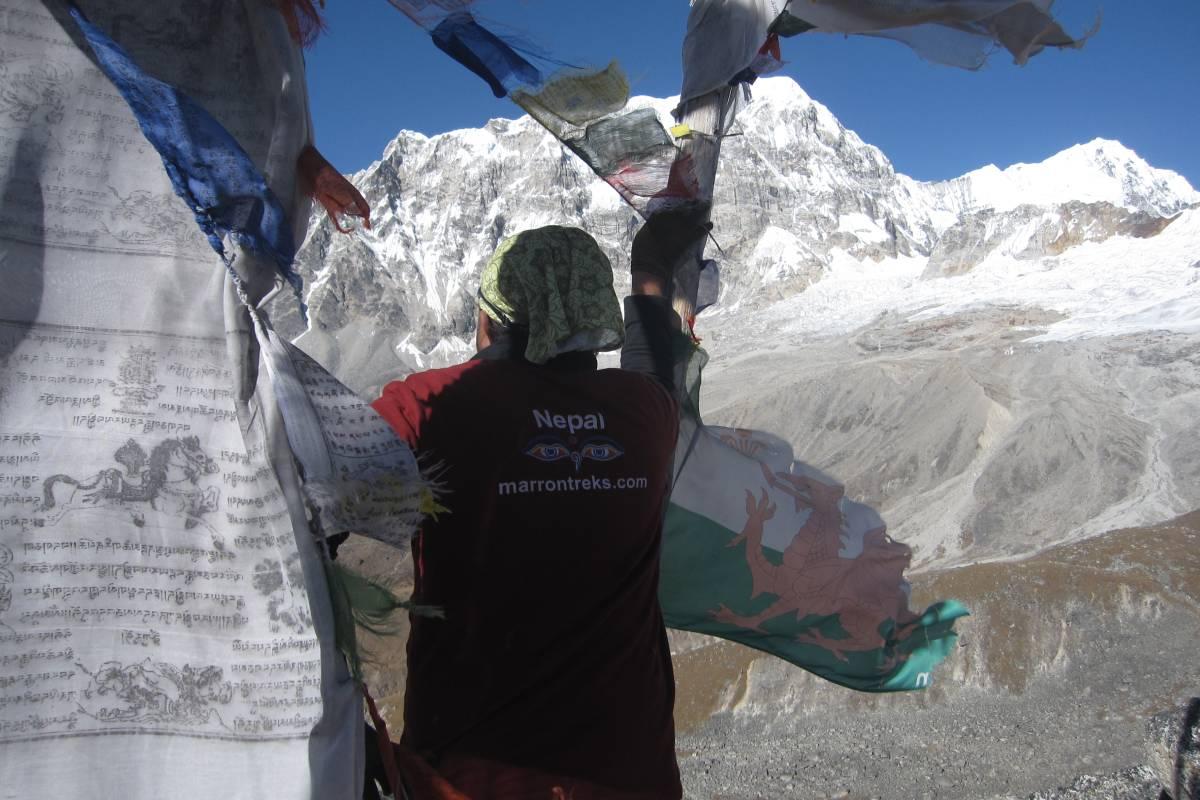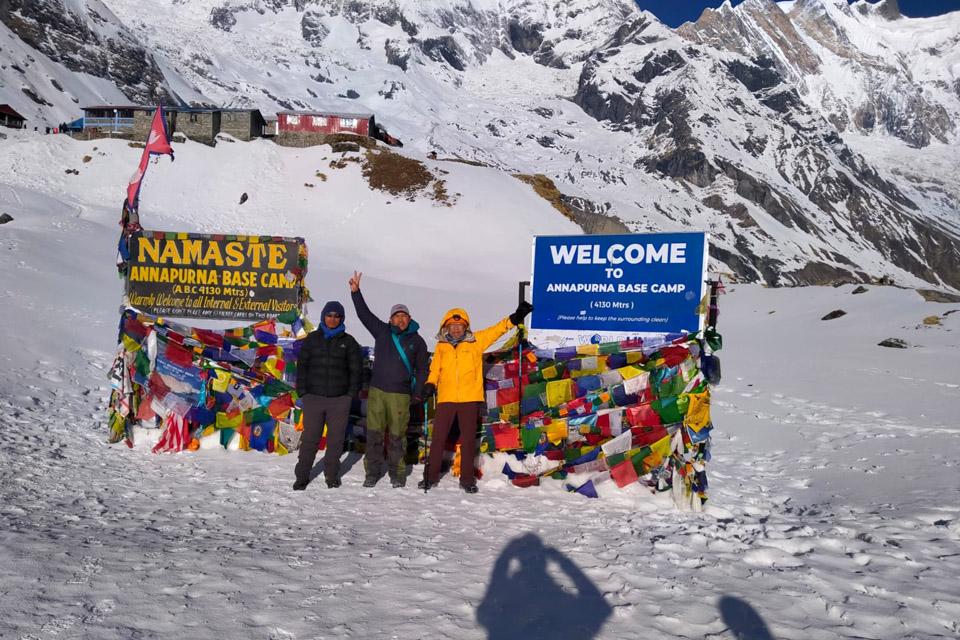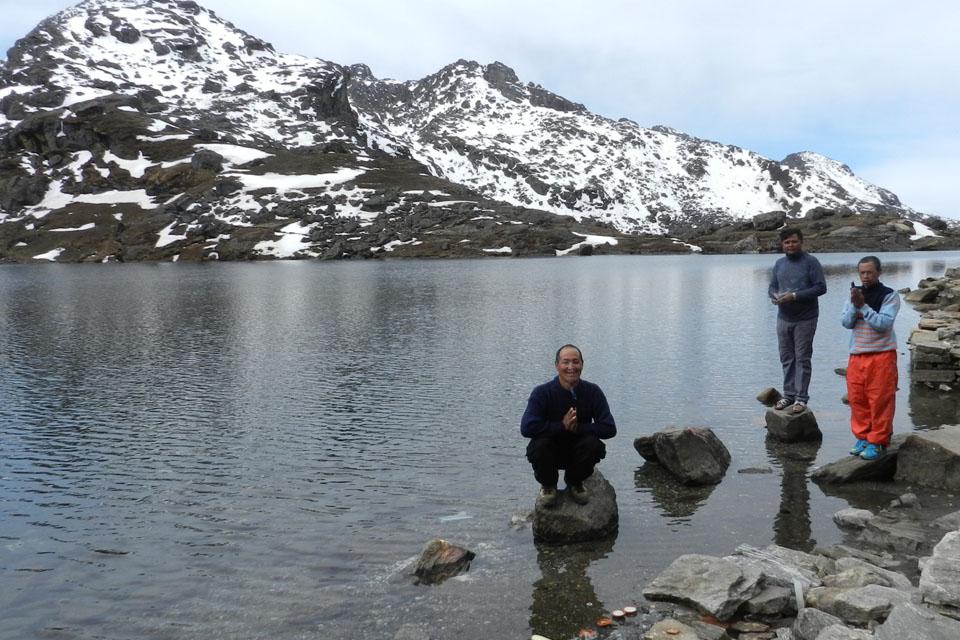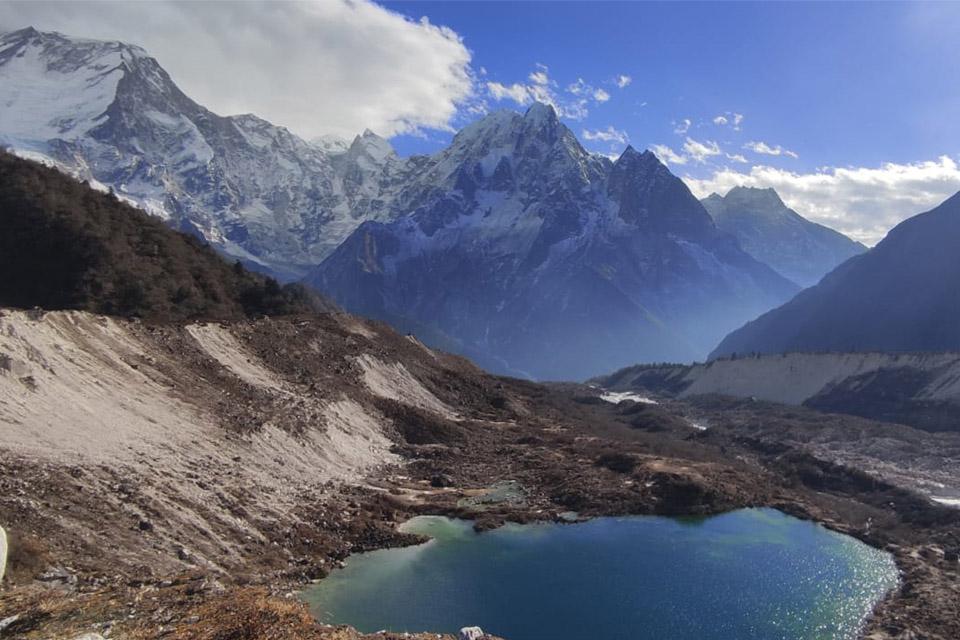Langtang Valley Trek
Trip at a Glance
Langtang Valley Trek is one of the popular treks that can be done closer to Kathmandu City. Langtang Valley trek may not come along with big names like Everest Base Camp trek or Annapurna Base Camp trek with only a few recognizing it but once you get to Langtang you won’t be disappointed. Like any other Himalayan trek, the trek to Langtang offers spectacular views of snow-capped mountains, lush forests, and beautiful mountain villages.
Trekking to Langtang is also the most accessible since the Langtang region is located closer to Kathmandu where a day’s drive will immediately take you to the trek-start-point. Langtang Valley Trek gets it’s head start from Syabrubesi where you take a drive from Kathmandu of about 8-9 hours then begin the trek the next day to Lama Hotel.
The region of Langtang is protected under Langtang National Park where the trek commences. One comes across the exotic flora and fauna of the park while trekking along the rugged trails of Langtang which include endangered species such as musk deer, red panda and Himalayan tahr.
There is plenty of opportunity to mingle with local communities like Tamang and Sherpa and learn more about their culture and traditions. The prime highlight of the trek is the most beautiful mountain settlement of Kyangjin Gompa located at 3,870 meters. Kyangjin Gompa or Kyangjin Monastery is a Buddhist village and monastery is located in the Langtang Valley surrounded by the high Himalayas. Tserko Ri (4,984m) is the popular Himalayan viewpoint situated closer to Kyangjin Gompa where you will take a day-excursion to observe some of the most spectacular mountain panoramas during sunrise.
Langtang Valley Trek is an appealing hike in the Himalayas offering a combination of natural beauty, cultural experiences, and a majestic mountain panorama. It is a great alternative to the more popular Annapurna and Everest region treks, providing a quieter and more off-the-beaten-path trekking experience in Nepal.
Langtang Valley Trek Highlights
- Short & simple trek appropriate even for beginners.
- A scenic Kathmandu Syabrubesi drive passes along small town, verdant fields with views of towering Himalayas.
- Witness stunning views of the Himalayan peaks, viz. Langtang Lirung (7227m), Ganesh Himal (7604m), Dorje Lakpa (6988m), Naya kanga (5857m), Yala peak (5500m)
- Visit Kyangjin Gompa (3870m), the last major settlement of Langtang Valley.
- Take a side excursion to Tsergo Ri (4984m) for spectacular mountain views.
- Observe the daily lives of the Tamang community.
- Majestic view of glaciers tumbling down from Langtang Lirung.
- Trek in the Langtang National Park.
Itinerary
Day 1: Arrival in Kathmandu
Day 2: Drive from Kathmandu to Syabrubesi (1460m/8–9 hrs)
Day 3: Trek from Syabrubesi to Lama Hotel (2500m/5–6 hours)
Day 4: Trek from Lama Hotel to Langtang (3430m /5–6 hrs)
Day 5: Trek from Langtang to Kyanjin Gompa (3870m /4-5 hrs)
Day 6: Rest day in Kyanjin Gompa; Explore Tsergo Ri (5,033m/6-7 hrs)
Day 7: Trek from Kyanjin Gompa to Lama Hotel (2420m/5–6 hrs)
Day 8: Trek from Lama Hotel to Syabrubesi (1460m/5-6 hrs)
Day 9: Drive from Syabrubesi to Kathmandu (1400m/8-9 hrs)
Day 10: Final departure
Once you land at the Tribhuwan International Airport in Kathmandu and accomplish your entry/visa formalities, you will be received by a representative from Marron Treks and transferred to the hotel. Welcome drinks will be served at the hotel after which we will have a quick pre-trip meeting and discuss the itineraries. You can then take your time to relax, unpack and spend the time as you wish. In the evening, stroll around the nearby places and get the feel of this energetic city.
After breakfast, we drive to Syabrubesi, first along the crowded streets of Kathmandu and then later through the bumpy and dusty, single lane road tucked at the base of north western hills. As we move ahead, the terraced farms and orthodox villages whip past us. We’ll halt for lunch at Trishuli Bazaar. We then resume our drive to Dhunche, a headquarter of Rasuwa district, from where we take a descent to finally arrive at Syabrubesi. Well, to be honest, you might not enjoy the road conditions and could shake off at times, but yes, the views of mountains, the lush green terraced farms and stone house clusters alongside, could easily cheer you up, diverting your attention away from the rustic roads.
The real trek begins today. All jacked up, we commence our trek along a flat route, passing through the Langtang National Park. On the way, we come across a police check point. We show our permit there and then continue along a downhill route for about 10 minutes crossing a suspension bridge. We advance further following the Langtang river and pass through a jungle. On the way we might catch quick glimpses of different species of monkeys. We now cross one more suspension bridge and arrive at a place called Dobang (1672 m), where we can relish the view of a waterfall. Trailing ahead along the steep route to a rocky ridge for about 2o minutes, we pursue a flat track to Pahare Hotel and then to Bamboo Hotel, where we halt for lunch. We continue our move making an ascent to the route alongside the north bank of Langtang Khola (river) and further make a steep climb to the landslide, which gets us to a place called Rimche. A 20 minutes ascent from here, brings us to Changtang, popularly known as Lama Hotel.
We are on the fourth day. Let’s begin our trek with a gentle climb which becomes steeper and steeper through the wild forests of hemlocks, oaks, maples and rhododendrons, high above the Langtang River. You can’t help glaring at the majestic Langtang Lirung (7,234 m) through the trees. We now cross a stream and further ascend to a pass marked with prayer flags. Crossing the Bailey bridge over another stream, we arrive at our lunch spot, the Ghora Tabela (2972 m), which is currently a Nepal Army and a National Park check post. By now, will have walked for almost 3 hrs. After lunch, we ascend further across the helipad, yak pastures and rhododendron bushes, which gets us to Thangshyap (3140 m). Continuing our climb ahead, we trail up the hillside above the potato, barley and buckwheat fields. We pass by few restaurants and guesthouses through the Ghumba village. We are now just about 15 minutes away from Langtang village. Briskly, we cross a stream and climb past several water-driven mills and prayer wheels, finally arriving at the settlement of Langtang.
Enjoy the sip of your morning tea and then gear up for a scenic trek! We trail through the village and climb a ridge top to a large chorten. Continuing our ascent past the splendid Mani walls (the largest in Nepal), we cross a stream and arrive at a village of Mundu (3442 m). We now trail alongside the river beside the pasture of Yamphu (3640 m). Crossing a concrete bridge, we climb a moraine and get our first glimpse of the Kyangjin Gompa and a magnificent icefall of Langtang Lirung.
We spend the entire day exploring Tsergo Ri, which will aid in our upward adjustment. We start off early in the day. Yak fields are crossed on the trail as it climbs to Tsergko Ri. From the summit of Tserko Ri, the sunrise vista is breathtaking. By late afternoon, we return to Kyangjin Gompa and take in the stunning monastery's vistas of the Himalayas, glaciers, yaks, and birds.
Most of our way back to the Lama Hotel is downhill, so shouldn’t be that exhausting! We reverse our journey of day 5 and 4 trailing alongside the Langtang River, passing through the village of Mundu, Langtang and then arriving at the Ghora Tabela. Lunching and resting here for a while, we take another steep descent to the Lama Hotel. The walk is pleasant as it downhill and more importantly embellished with Mani walls, chortens, pastures and rhododendron clusters. And of course, you can’t help wooing at the beauty of Langtang Lirung, everytime you see it through the trees.
We essentially make a full circle to return to Syabrubesi. Since the hike would primarily involve descending, it will be simpler. Get some sleep in Syabrubesi.
We take a drive back to Kathmandu after breakfast tracing the same route which we took before the trek start. The remainder of the day is devoted to packing and possibly completing any last-minute memento purchases.
A representative from Marron Treks will escort you to the Tribhuwan International Airport, three hours prior to your flight schedule. As you wave us good bye and enter the terminal block, you would perhaps recall your arrival at this place. No wonder everything seems so familiar now because, you had come here as tourist, but you are going back as a friend! Have a safe flight back home and we look forward to being your travel companion in Nepal again!
What is included?
- Airport pick-up and drop services.
- Hotel accommodations in Kathmandu on Twin-Share Basis with breakfast.
- Kathmandu/Syabrubesi//Kathmandu transfers by a local bus. (Option: Private Vehicle)
- All trekking accommodations with Breakfast/Lunch/Dinner at local lodges.
- Four seasonal sleeping bags (to be returned after trip completion) & Marron Treks duffel bag
- A comprehensive medical kit (will be carried by the trekking guide).
- Experienced Government licensed English Speaking Guide & Porter (1 porter for two people) including their food, accommodation, salary & insurance.
- Permits for Langtang National Park, & TIMS (Trekkers' Information Management System).
- Farewell dinner with a live Nepalese cultural program.
- All government and local taxes.
What is not included?
- International airfare
- Nepal entry visa fee – Visa can be obtained upon your arrival at the Tribhuwan International Airport in Kathmandu. (USD30 for 15 days)
- Lunch & dinner in Kathmandu.
- Personal travel insurance.
- Emergency rescue evacuation (to be covered by the client's travel insurance).
- Other expenses of a personal nature (phone calls, laundry, battery recharge, bottle or boiled water, hot shower etc.)
- Bar bills, alcoholic drinks & beverages.
- Tips to guide & porters (Tipping is expected).
Route Map
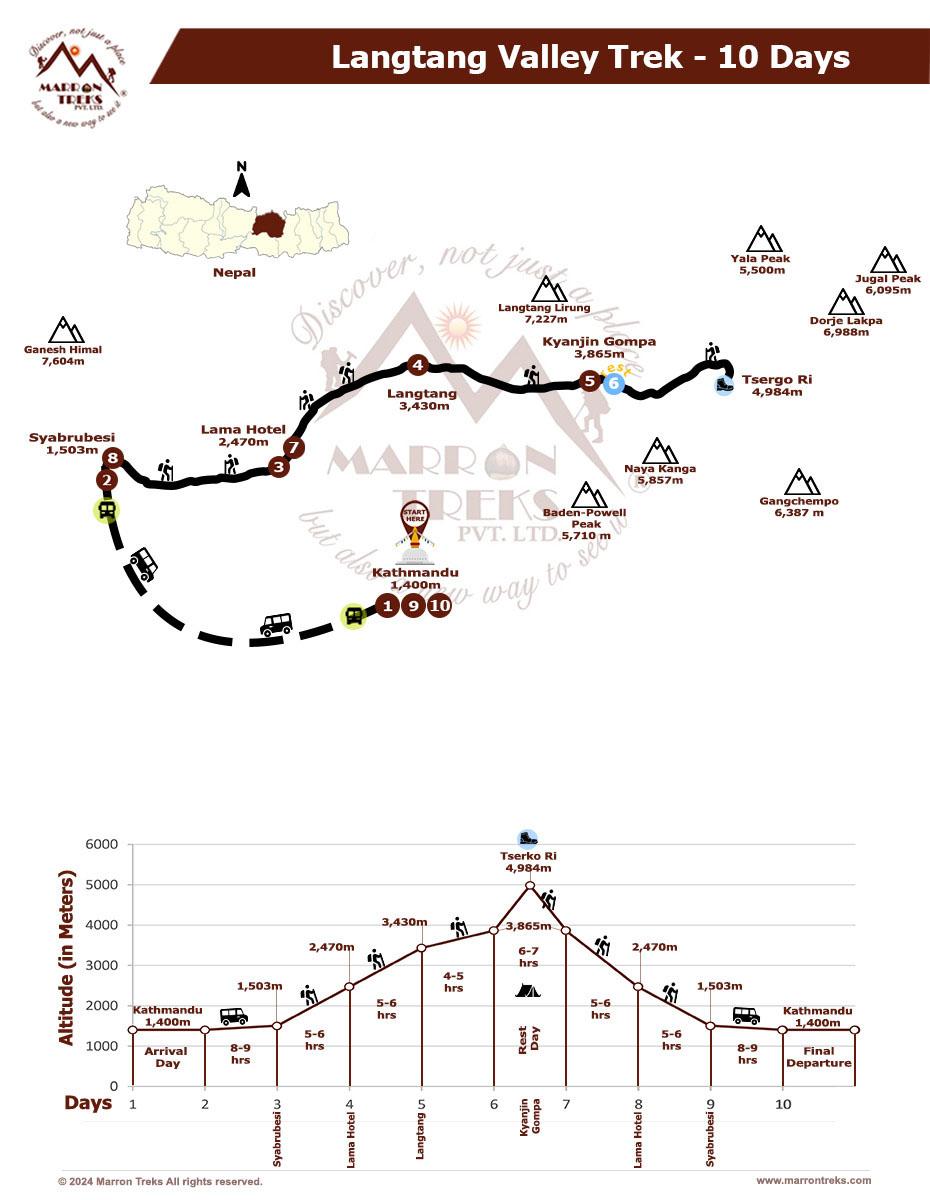
Trip Info
Accommodation
While you are in Kathmandu, we opt to accommodate you in 4- or 5-star hotels like Hotel Royal Singhi (4-star), Hotel Manaslu (4-star), Radisson (5-star), Yak & Yeti (5-star), or similar. During the trek, you will be accommodated in a local mountain lodge, better known as Tea House. These lodges and teahouses provide good services and are equipped with basic amenities. We will endeavor to provide you with the best accommodation available along the route so that you get a good night’s rest in a hygienic milieu.
Meals
We never compromise the quality of food or the health of the trekkers as well as the crew members. Generally, we opt for the fresh and nutritional local community food available. You could make your delicious pick from an array of traditional foods like Sweet potatoes, buckwheat barley, etc. This way, you could not only get a real sense of the local culture and life patterns but also contribute to promoting the locally available resources of organic food and beverages. Besides, a wide range of Continental, Chinese, Italian and Indian cuisines like Pizza, Spaghetti, French Fries, Soups, Breads, Masala curry, etc. are also available in the restaurants for your retreat.
Acclimatization
Altitude sickness is a serious risk while trekking in the Himalayas. It's important to acclimatize properly by spending a few days at lower altitudes before heading higher. By spending time at lower altitudes before pushing higher, your body has time to adjust. Our trekking packages have enough acclimatization days planned where you'll be spending a day or two at lower altitudes, allowing your body to adjust to the increasing altitude.
Electricity & drinking water
For an additional cost, you can use the electricity in all tea houses and lodges to recharge your batteries. The lodges have packaged mineral water for sale, or you can fill your bottle with boiling water. To make water drinkable, you can use water purification tablets too. But, due to hygienic issues, you should avoid drinking water from taps, rivers, or wells in trekking areas.
Communication
At lodges, restaurants, and hotels, Wi-Fi is available for an additional fee in the most popular trek regions, like Everest, and Annapurna. However, at high elevations, phone calls are the only means of connection. Our office in Kathmandu is in constant communication with your trek guide. In Kathmandu, you can purchase a local sim card for communication purposes. At high elevations, the mobile signal might not be as strong, though.
Luggage
Our porters are paired with one trekker for every two hikers, and one porter can safely carry 30 kg maximum weight. Therefore, we advise you to fill your duffle bag not more than 15 kg with your belongings. You may carry a small backpack with your valuables and informational documents. The things you are not taking along on the trek can be stored in a hotel in Kathmandu free of cost.
Typical Trek Day
Mostly your trek day starts with breakfast at 7-8 am, followed by a 3-4 hour morning trek. Lunch break is around an hour, then you continue trekking to your destination for the day. After reaching the teahouse lodge, you can relax, explore nearby areas, and enjoy dinner at 6-7 pm. Evenings involve socializing, a trek briefing, and leisure activities before bed.
Travel Insurance
It is advised that you arrange your travel insurance before leaving your homeland. The main thing is to make sure that your insurance covers you for both- medical and evacuation costs. Having travel insurance with you makes your trip secure and hassle-free.
Our Guides
Guides play a significant role during the trek. They are the ones who literally decipher the trekking codes for you so that you can actually connect with nature, culture and people along the way. We have helpful and dedicated trekking guides who are very well-versed in the culture, life patterns and every single detail pertaining to the trek region you are traveling in. Thus, in the company of our professional Sherpa guides, your trek becomes not only entertaining but also equally informative.
Porter and Staff Care
When it comes to high-altitude trekking, porters and staff members make up a pivot. Marron Treks ensures that all the porters and staff members going to high altitudes are provided with adequate clothing and equipment. All our field staff are covered by insurance.
